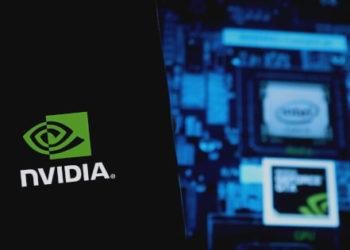Generative AI, the ability of algorithms to process various inputs such as text, images, audio, video, and code to generate new content, is advancing at an unprecedented rate. This technology is making significant strides across multiple industries, with the Architecture, Engineering, and Construction (AEC) sector standing to benefit immensely, according to NVIDIA Technical Blog.
Diffusion Models: A Key Component of Generative AI in AEC
Since the introduction of generative AI, large language models (LLMs) like GPT-4 have been at the forefront, renowned for their versatility in natural language processing, machine translation, and content creation. Alongside these, image generators such as OpenAI’s DALL-E, Google’s Imagen, Midjourney, and Stability AI’s Stable Diffusion are changing the way architects, engineers, and construction professionals visualize and design projects, enabling rapid prototyping, enhanced creativity, and more efficient workflows.
At their core, diffusion models possess a distinctive capability: they can generate high-quality data from prompts by progressively adding and removing noise from a dataset. Training these models involves adding noise to millions of images over many iterations and rewarding the model when it recreates the image in the reverse process. Once trained, the model can generate realistic data, such as images, text, video, audio, or 3D models.
Diffusion models offer several specific benefits to the AEC sector:
- High-quality visualizations: Diffusion models can generate photorealistic images and videos from simple sketches or textual descriptions, aiding in detailed architectural renderings and visualizations.
- Daylighting and energy efficiency: These models can generate daylighting maps and analyze the impact of natural light on building designs, optimizing window placements and enhancing energy efficiency.
- Rapid prototyping: By automating the generation of design alternatives and visualizations, diffusion models speed up the design process, allowing architects and engineers to explore more design options faster.
- Cost savings and process optimization: Diffusion models enable the customization of Building Information Modeling (BIM) policies to suit specific regions and projects, reducing project costs and improving overall efficiency.
Control and Customization with ControlNets
Diffusion models can be challenging to control due to the way they learn, interpret, and produce visuals. However, ControlNets, a group of neural networks trained on specific tasks, enhance the base model’s capabilities. Architects can exert precise structural and visual control over the generation process by providing references.
For example, Sketch ControlNet can transform an architectural drawing into a fully realized render. Multiple ControlNets can be combined for additional control, such as pairing a Sketch ControlNet with an adaptor to incorporate specific colors and styles.
Leveraging NVIDIA Accelerated Compute Capabilities
NVIDIA-optimized models, such as the SDXL Turbo and LCM-LoRA, offer state-of-the-art performance with real-time image generation capabilities. These models significantly improve inference speed and reduce latency, enabling the production of up to four images per second, drastically reducing the time required for high-resolution image generation.
Building and Customizing Diffusion Models
Organizations can leverage diffusion models in multiple ways: using pretrained models as-is, customizing them for specific needs, or building new models from scratch. Pretrained models are deployable immediately, reducing the time to market and minimizing initial investment. Customizing pretrained models involves fine-tuning with a domain-specific dataset to better align with specific needs, improving accuracy and relevance. Building models from scratch, although resource-intensive, allows for the creation of highly specialized solutions addressing unique challenges.
For firms wanting a user-friendly path to start customizing diffusion models, NVIDIA AI Workbench offers a streamlined environment. It provides pre-configured projects adaptable to different data and use cases, ideal for quick, iterative development and local testing.
Responsible Innovation with Diffusion Models
Using AI models involves several critical steps, including data collection, preprocessing, algorithm selection, training, and evaluation. It’s equally important to integrate responsible AI practices throughout this process. Generative AI models are susceptible to biases, security vulnerabilities, and unintended consequences. NVIDIA introduced accelerated Confidential Computing, a groundbreaking security feature that mitigates threats while providing access to the unprecedented acceleration of NVIDIA H100 Tensor Core GPUs for AI workloads.
Get Started
Generative AI, particularly diffusion models, is revolutionizing the AEC industry by enabling the creation of photorealistic renderings and innovative designs from simple sketches or textual descriptions. AEC firms should prioritize data collection and management, identify processes that can benefit from automation, and adopt a phased approach to implementation. The NVIDIA training program helps organizations train their workforce on the latest technology and bridge the skills gap by offering comprehensive technical hands-on workshops and courses.
For further details, visit the NVIDIA Technical Blog.
Image source: Shutterstock
Credit: Source link












































